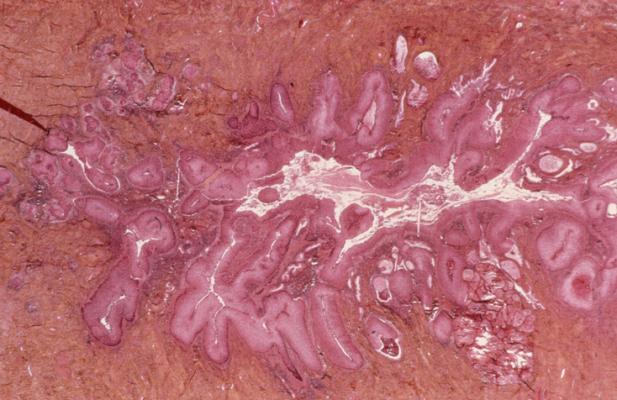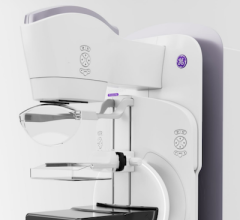
October 2, 2023 — Two liquid biopsy tests that look for the presence of human papillomavirus (HPV) in the blood accurately identified patients with a high risk of cervical cancer recurrence after the completion of chemoradiation, a new study confirms. Findings will be presented today at the American Society for Radiation Oncology (ASTRO) Annual Meeting.
The study compared two novel tests – a digital polymerase chain reaction (dPCR) test and a sequencing test for genetic material from HPV, the main cause of cervical cancer – and found they were equally effective at identifying residual disease in the blood of patients who recently completed radiation and chemotherapy for cervical cancer. Earlier detection allows for earlier treatment of residual disease and potentially better survival rates.
“These non-invasive tests can detect residual disease following chemoradiation treatment earlier than imaging or a clinical exam,” said lead study author Kathy Han, MD, a radiation oncologist at the Princess Margaret Cancer Center at the University of Toronto. “We can detect very minimal disease, before it grows bigger, which potentially will enable us to intervene earlier and improve outcomes for people with cervical cancer.”
Roughly 11,500 new cases of cervical cancer are diagnosed annually in the U.S., and an estimated 4,000 Americans die from the disease each year. Approximately 30-40% of patients with cervical cancer develop tumor recurrence following chemoradiation, and currently, residual disease is often detected too late to improve survival rates.
Tissue biopsy has long been considered the gold standard for identifying tumors, but it requires an invasive procedure to sample enough tumor tissue to be visualized on imaging, and it provides a snapshot only of a specific tumor region. Liquid biopsies can detect microscopic components of tumors in bodily fluids such as blood or urine, providing a less invasive option to assess malignancy. Blood tests are the most widely used type of liquid biopsy and can identify circulating tumor DNA (ctDNA), circulating RNA and other markers that signal the presence of cancer, including HPV.
Because these tests can detect fragments of the HPV virus that remain in the blood following chemoradiation but before tumors recur, “liquid biopsies provide insight before tissue biopsy becomes possible,” said Dr. Han. “If we can predict who might be at higher risk of recurrence, it may be a signal to clinicians to make sure these patients are followed more closely.”
In a previous, pilot study, Dr. Han and her team collected blood samples from 20 patients with cervical cancer before and after chemoradiation treatment. Using digital polymerase chain reaction (dPCR) tests, they found people with detectable HPV ctDNA at the end of chemoradiation had worse outcomes than those with no detectable HPV ctDNA.
This new study sought to validate those findings in a larger sample of patients, using both dPCR and more sophisticated HPV sequencing tests. To do so, researchers prospectively enrolled 70 patients from four Canadian centers; all participants were diagnosed with HPV-positive cervical cancer and treated with chemoradiation. Patients were followed for a median of 2.2 years.
Patients gave blood samples before treatment; they also received blood tests immediately after treatment, between four to six weeks post-treatment and 12 weeks post-treatment. Patients with detectable HPV ctDNA in their blood at each of these three timepoints had substantially worse progression-free survival rates than those with no detectable HPV in their blood.
Specifically, 53% of patients with detectable HPV ctDNA immediately following chemoradiation were progression-free two years later, compared to 87% of patients without detectable HPV ctDNA immediately after treatment. The difference was even more pronounced at the 12-week mark; patients with detectable HPV ctDNA three months following chemoradiation had a 26% two-year progression-free survival rate, compared to 85% for those without.
“We were happy to see that we could validate our initial results,” said Dr. Han. “We were surprised, however, to find no significant differences between the digital PCR test and the HPV sequencing test. Even though HPV sequencing was more sensitive than digital PCR, both approaches returned similar results after treatment.”
In recent years, advances in technology have accelerated the use of liquid biopsies, which are believed to hold great potential for non-invasive cancer screening in high-risk populations. However, the tests are not yet widely available.
One of the challenges with making HPV ctDNA testing widely available for people with cervical cancer is the variety of HPV types that cause the disease, said Dr. Han, noting that 11 distinct HPV types were detected in their analysis. Yet Dr. Han said the HPV sequencing test was capable of detecting all 11 types with high accuracy and suggested that it could become a generalizable approach for HPV-positive cervical cancer.
Expanding access to liquid biopsies is also necessary, said Dr. Han, and will be crucial for future research using liquid biopsies to identify patients at high-risk of recurrence and randomizing them to intensive versus standard treatment.
For more information: www.astro.org


 December 04, 2025
December 04, 2025 








